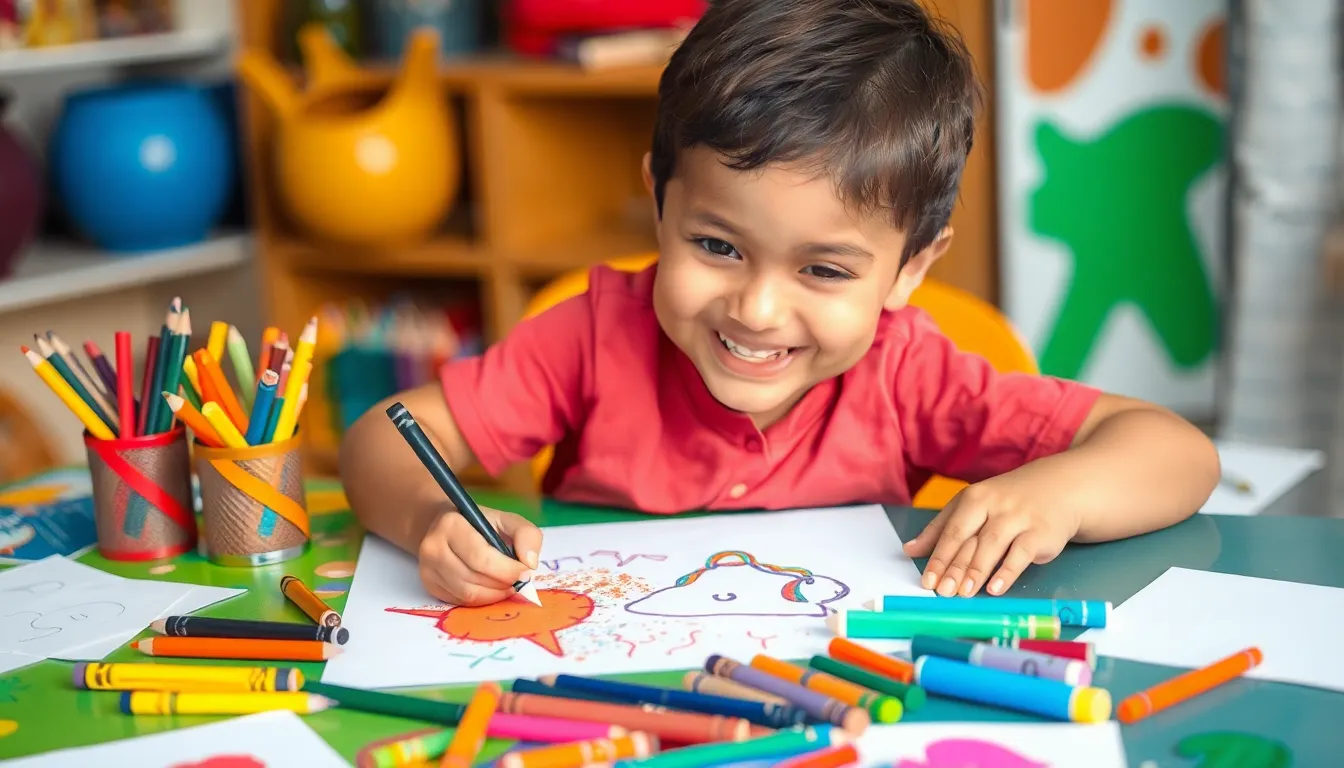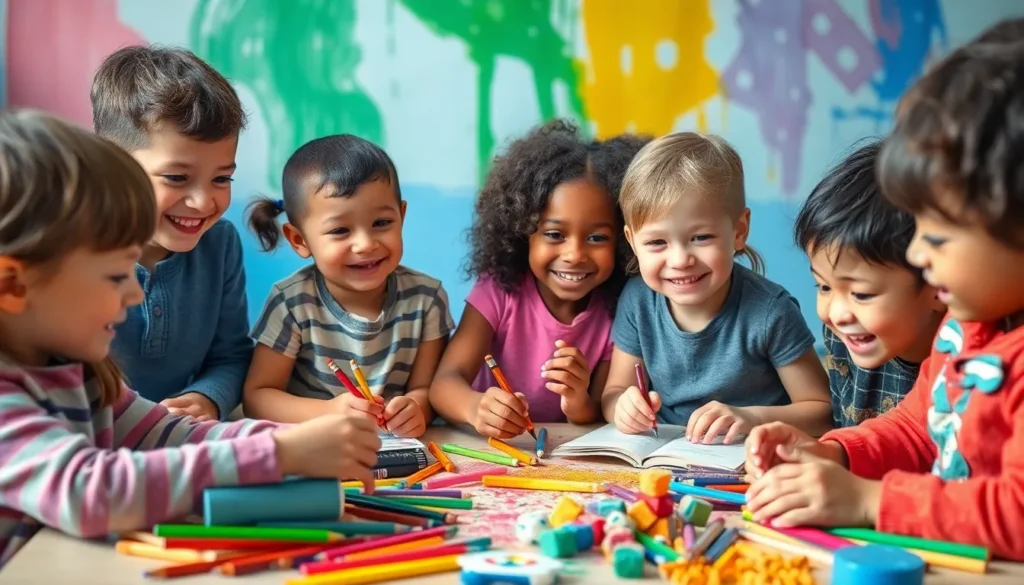Table of Contents
ToggleVisual development isn’t just a fancy term thrown around in art schools; it’s the magic sauce that brings characters and worlds to life. Imagine a world where ideas leap off the page, where colors dance and characters strut their stuff. That’s the power of visual development, and it’s more important than ever in today’s visually driven society.
Understanding Visual Development
Visual development serves as a crucial element in the arts, shaping how stories, characters, and environments come to life. This process involves various stages and factors that play significant roles in creating compelling visuals.
Stages of Visual Development
Stages of visual development encompass multiple phases, starting with concept sketches that outline initial ideas. Following this, refinement takes place through detailed designs, which enhance the visual narrative. After preliminary designs, color palettes are selected to evoke emotion and reinforce themes. Finalizing the visuals often includes creating polished illustrations that combine all elements cohesively. Each stage builds upon the previous one, ensuring a rich visual experience.
Factors Influencing Visual Development
Numerous factors influence visual development, beginning with artistic intent, which defines the overall vision and direction. Audience consideration plays a vital role, as different demographics respond uniquely to visuals. Cultural context can significantly shape design choices, informing symbolism and elements used in the artwork. Technological advancements also impact techniques and tools available for artists, allowing for innovative approaches. These factors collectively contribute to a successful visual narrative, enhancing artistic expression.
Importance of Visual Development

Visual development plays a crucial role in enhancing artistic expression and storytelling. It impacts various fields, from animation to gaming, by creating immersive experiences.
Impact on Learning
Visual development aids in comprehension and retention. Engaging visuals facilitate understanding complex concepts in education. For instance, students often grasp information faster when presented with diagrams or illustrations compared to text alone. Studies show that visual aids improve memory recall, making it easier for learners to connect ideas. Incorporating visual development into curricula can enhance critical thinking and creative problem-solving skills. This approach prepares students for a visually oriented world where effective communication relies on clear, impactful visuals.
Implications for Childhood Development
Visual development significantly influences early childhood growth. Young children learn to interpret visual stimuli, which cultivates their cognitive abilities. Art activities, like drawing and painting, encourage self-expression and emotional intelligence. Engaging with colors and shapes also promotes fine motor skills and coordination. Research indicates that children exposed to visual arts demonstrate increased creativity and confidence. Exposure to diverse visual narratives fosters cultural awareness, helping children navigate complex social environments as they grow. Encouraging visual exploration lays a foundation for lifelong learning and adaptation.
Strategies to Support Visual Development
Supporting visual development involves various engaging activities and appropriate resources. These strategies foster creativity and enhance cognitive abilities in individuals, especially children.
Engaging Activities for Infants
Interactive playtime enhances visual skills in infants. Activities like colorful mobile displays capture their attention and stimulate observation. Using simple picture books with bold images encourages visual tracking and recognition. Additionally, textured toys invite exploration and strengthen fine motor skills. Tummy time positioned with visually stimulating objects helps infants develop their ability to focus and reach. Each of these activities not only promotes vision but also nurtures curiosity and encourages self-expression.
Recommended Resources and Tools
Various tools enhance visual development effectively. High-contrast toys are ideal for stimulating infants’ initial vision. Books specifically designed for young children often feature vivid images and captivating stories. Video content aimed at toddlers typically includes colorful animations that engage their attention. Digital applications designed for early learning also provide interactive visual scenarios. Parent guides available through educational websites offer activities to strengthen visual skills at home. Each resource plays a vital role in enriching the visual development journey.
Common Visual Development Issues
Visual development issues often present challenges that impact cognitive and emotional growth. Recognizing these issues early can significantly aid in timely intervention.
Early Signs of Issues
Identifying early signs of visual development issues is crucial. Parents may notice difficulties with tracking moving objects. Children might struggle with distinguishing colors or show reluctance in engaging with visual materials. In some cases, excessive squinting or covering one eye can indicate a problem. Other signs include frustration when reading or drawing, which may suggest issues with visual perception. Observation of these behaviors can guide parents in seeking professional evaluations.
Interventions and Treatments
Interventions play a vital role in addressing visual development issues. Optometrists often recommend vision therapy, which includes exercises designed to strengthen visual skills. In some instances, specialized educational strategies may support children with learning difficulties linked to visual perception. Occupational therapy can also enhance visual-motor integration through targeted activities. Utilizing appropriate visual aids, such as glasses or contact lenses, improves clarity in vision-related tasks. Regular follow-ups with professionals ensure progress and adjust treatment plans as needed.
Visual development is a powerful tool that shapes not only artistic expression but also cognitive and emotional growth. Its influence extends beyond art into education and personal development, making it vital in nurturing creativity and understanding. By engaging with visually stimulating resources and activities, individuals can enhance their visual skills and foster a deeper connection with the world around them. Early recognition of visual development issues is essential for timely intervention, ensuring that everyone can benefit from the enriching experiences that visual arts provide. As society continues to evolve, the importance of visual development in shaping narratives and fostering growth will remain undeniable.




